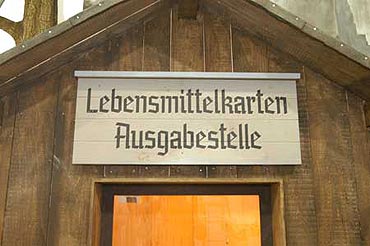Schrift: größer/kleiner
Inhaltsverzeichnis
Sie sind hier: WirRheinländer > english version > The Exhibition > Scenes > Currency reform
Currency reform

Even during the post-war period, the monetary and market consequences of the National Socialist (Nazi) wartime economy were still noticeable. A massive amount of money was available to buy a very limited range of goods. A lot of money was in circulation, but it was worthless. In order to stabilise the value of the currency and to stimulate purchasing power, in the summer of 1948 a currency reform was introduced in the three West-Zones. On 19th June the monetary law of the Western Military Governors was announced on the radio and in printed leaflets. On the 20th and 21st June this was followed at issuing offices for food ration cards by the cash payment to every inhabitant of wages, salaries, pensions, rents and leases at a conversion rate of 1:1. On the day of monetary reform the shops were filled with goods again.
In the Monetary Law of June 1948 it says:
„With effect from 21st June 1948 the Deutsche-Mark is the valid currency. Its unit of account is the Deutsche Mark, which is divided into one hundred Deutsche Pfennigs. …
Every inhabitant of the reformed currency area shall receive in exchange for old bank-notes the same nominal value in cash up to sixty Deutsche Marks (per capita). Part of the per capita sum, not more than forty Deutsche Marks, shall be paid out immediately, the remaining sum within two months… ."
(Gesetz- und Verordnungsblatt des Wirtschaftsrates des vereinigten Wirtschaftsgebietes 1948, Beilage 5, S. 1)


